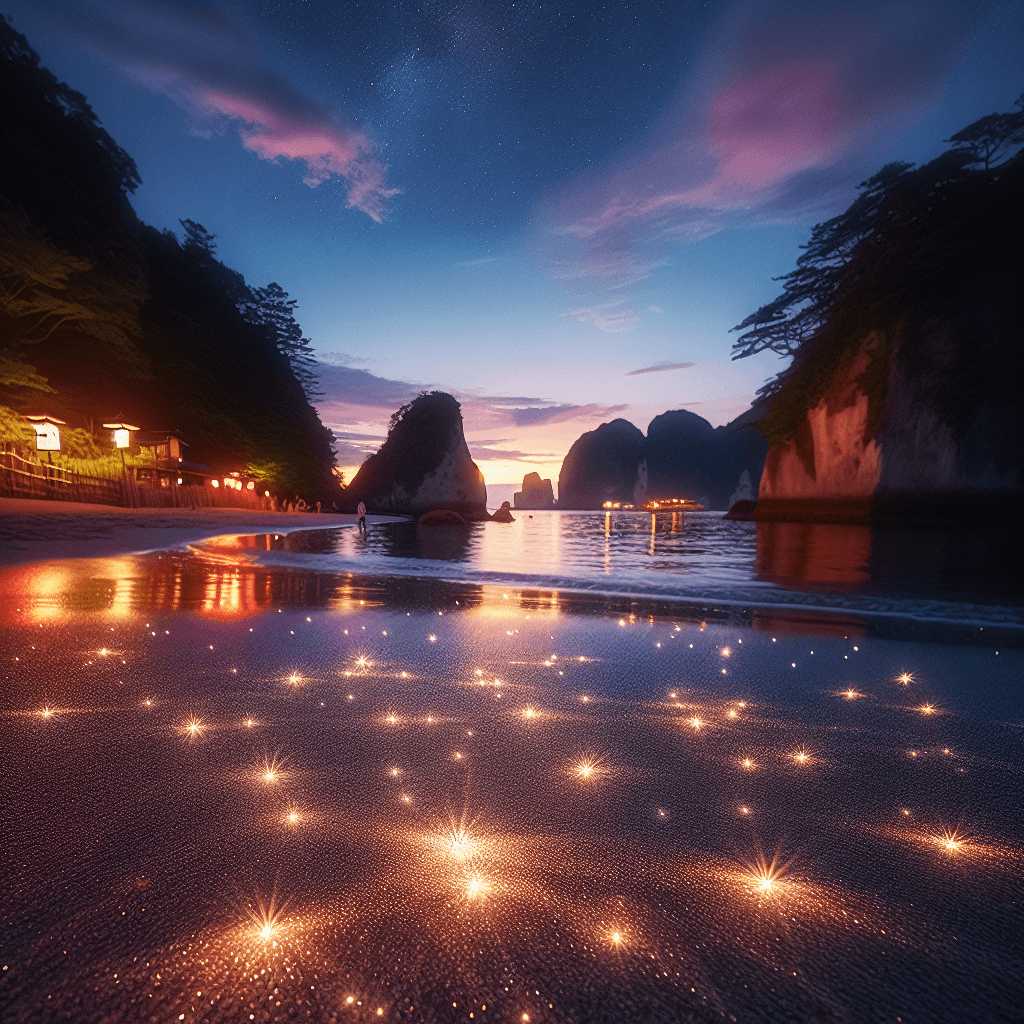What makes the sand on some Japanese beaches look like millions of tiny stars
It’s not sand at all, but the beautiful, star-shaped skeletons of microscopic sea creatures that have washed ashore for millennia.


Too Long; Didn't Read
TLDR: The star-shaped sand is not actually sand, but the tiny shells of microscopic sea creatures called foraminifera that have washed ashore.
The Celestial Shore: Uncovering What Makes the Sand on Some Japanese Beaches Look Like Millions of Tiny Stars?
Imagine walking along a shoreline where the ground beneath your feet isn't made of ordinary grains of rock, but of countless tiny, perfectly formed stars. This isn't a scene from a fantasy novel; it’s a reality on a few special beaches in Japan’s southern islands. For decades, visitors have been captivated by this "star sand," or Hoshizuna in Japanese, scooping up handfuls to marvel at the celestial shapes. But what is this magical-looking sand, and how did it come to be? This post will delve into the fascinating biological origin story of Japan’s star sand, revealing that its creation is a wonder of marine life, not geology.
It’s Not Sand, It’s a Skeleton
The first and most surprising fact about star sand is that it isn’t sand at all. Traditional beach sand is the result of millennia of erosion, where rocks and minerals are broken down into tiny grains by wind and waves. Star sand, however, has a biological origin. Each tiny "star" is actually the exoskeleton of a microscopic, single-celled marine organism called a Foraminifera.
These tiny protists, often called "forams," are abundant throughout the world's oceans. They build hard, multi-chambered shells, or "tests," to protect themselves, usually from calcium carbonate. The specific star shape seen on Japanese beaches comes from a few particular species of foram, most notably Baculogypsina sphaerulata. Their tests feature five or six pointed spines, which help the organism move and anchor itself to seagrass on the ocean floor. When the foram dies, this intricate, star-shaped skeleton is all that remains.
The Life Cycle of a Star-Maker
The journey from a living organism to a grain of star sand is a simple yet elegant natural process. The foraminifera live on the seabed in shallow, subtropical waters, thriving in vast seagrass meadows. As they live and grow, they construct their calcium carbonate shells. After their short life cycle ends, their tiny, lightweight bodies decay, leaving behind the empty tests.
Ocean currents and gentle wave action then play a crucial role. They lift these empty shells from the seafloor and carry them towards the shore. Over thousands of years, billions upon billions of these minuscule exoskeletons accumulate, washing up on the beach to create the star-filled shores that visitors find so enchanting. What you’re walking on is a massive, natural graveyard of microscopic sea creatures.
A Cosmic Phenomenon in a Specific Place
While foraminifera are found globally, star sand beaches are exceptionally rare. They are found almost exclusively in East Asia, with the most famous examples located in Japan's Okinawa Prefecture. Two beaches are particularly renowned for this phenomenon:
- Hoshizuna-no-Hama (Star Sand Beach) on Iriomote Island
- Kaiji Beach on Taketomi Island
The reason star sand is concentrated here is due to a perfect storm of environmental conditions. The warm, clear, and calm waters of the East China Sea, combined with extensive seagrass beds, create the ideal habitat for these specific star-shaped foraminifera species to flourish. The gentle currents in the area are also strong enough to transport the empty shells to shore but not so powerful that they grind them into dust.
A Treasure Under Threat
Unfortunately, this unique natural wonder is incredibly fragile. The delicate ecosystems that produce star sand face several threats. Rising sea temperatures and ocean acidification, both consequences of climate change, directly harm the foraminifera. Acidification makes it more difficult for them to build their calcium carbonate shells. Furthermore, pollution and coastal development can destroy the vital seagrass beds they call home. Over-tourism also poses a risk, as countless visitors taking small amounts of sand as souvenirs can lead to a significant depletion of the beaches over time.
Conclusion
The mystery of what makes the sand on some Japanese beaches look like stars is a beautiful testament to the hidden wonders of the marine world. These are not fallen stars from the heavens, but the skeletal remains of tiny organisms that lived and died in the ocean. This phenomenon is a powerful reminder that beaches are not just geological formations but are often dynamic, living ecosystems. So, if you ever find yourself on a star sand beach, take a moment to appreciate the microscopic life that created such a breathtaking landscape and the delicate environmental balance required to sustain it.
More Articles

Why do movie punches sound so much crunchier and louder than real ones?
That sickening, bone-crunching punch you hear in the movies is a lie, and the secret ingredient is probably sitting in your refrigerator right now.

What makes a beer bottle suddenly foam over just from a light tap on top?
It’s not magic, it’s a shockwave; discover the explosive physics that turns a gentle tap on your beer bottle into an instant foamy geyser.

Why do police officers touch the back of a car during a traffic stop?
It’s not a random habit; that simple touch is a calculated, old-school tactic designed to leave a crucial and potentially life-saving piece of evidence behind.